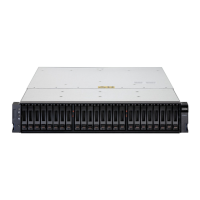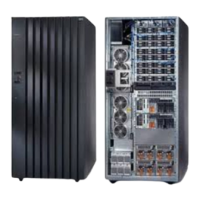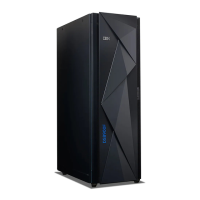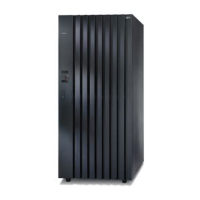7065Admin_Enterprise.fm Draft Document for Review August 30, 2007 12:59 am
122 IBM System Storage DS3000: Introduction and Implementation Guide
1. Select this option, and the load configuration notes will appear. Read them carefully then
click Yes.
2. Now the Script Editor will open and you will be prompted to select the configuration file.
3. Select your configuration file and click OK
4. Now the file gets loaded into the Script Editor and the Confirm Load Configuration box
appears.
a. If you want to append a configuration to the existing one, click Execute and the script
will append the uploaded configuration to the existing one.
b. If you want to restore your subsystems configuration before the new one is uploaded
select Edit and look in the Script Editor for the following lines and uncomment as
shown in Figure 7-6. After uncommenting these two lines select Tools → Verify →
Execute from the Menu bar to execute the script and upload the new configuration.
Figure 7-6 Uncomment lines to delete the existing configuration before uploading a new one
Refresh
Select this option to refresh the view of the Enterprise Management window. (Figure 7-7). You
might use this if a system’s status has changed, for example, after an error recovery.
Note: We recommend that you use the load configuration file option for new DS3000s
which you want to configure similar to an existing DS3000. For example, if you have a
number of storage subsystems with similar configurations, you can configure one, save the
configuration file, modify if necessary (for example, to use a different storage subsystem,
or define different hosts), then use it to quickly configure the remaining storage
subsystems.
You could also use this option if your original hardware was destroyed in a disaster - to
re-create replacement DS3000s.
Existing configurations: The script will not overwrite an existing configuration - that is,
the script will fail if it attempts to build an array using drives that are already part of an
existing array.
However, if you have lost an array which had data stored on it, do not reapply the
configuration using this script. It will initialize the drives and delete the data, Instead, you
should contact IBM technical support to see if your data can be recovered.
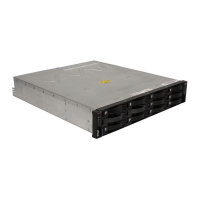
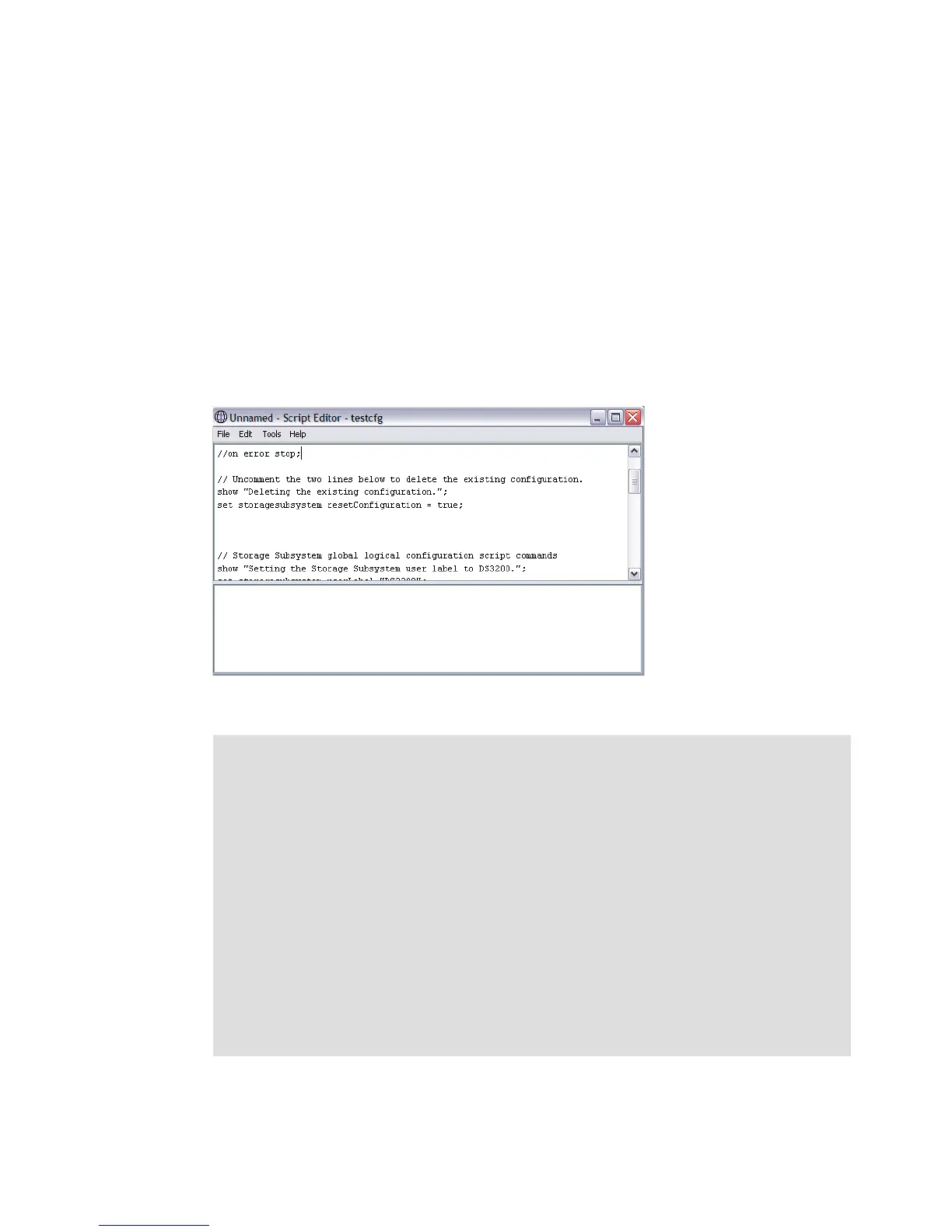